Brooklyn-based director and cinematographer Jared Levy has traveled the world pursuing his distinct docu-journalism. Among his projects is Graffiti Fine Art, an award-winning documentation of artists who participated in the 1st International Graffiti Biennial in São Paulo, Brazil. More recently, NYC’s Cern was the subject of a short film called Updating Philosophies. Eager to find out more, I met up with him last week in Williamsburg.
Your award-winning film Graffiti Fine Art is a wondrous ode to graffiti. What drew you to graffiti? Any early memories?
I grew up in a small town on Long Island, where there was no graffiti. And I was indifferent to it on my trips into the city. It was when I visited São Paulo in 2009 that I first discovered it on another level and appreciated it.
What brought you to São Paulo?
I had recently graduated from the Newhouse School at Syracuse University, and I was interested in developing a portfolio. After spending two weeks on vacation in Brazil during Carnaval, I was eager to return to the country. I arrived without any preconceived notion about what topics I would cover. At the time I felt like it was better to explore what was there than to conjure up ideas about a place I didn’t know. It didn’t take long for São Paulo’s graffiti to grab my attention. The city is completely covered in paint.
How were you able to meet and connect to so many street artists in a relatively short period of time?
Lots of serendipity! I was at a bar in São Paulo when I mentioned to one of the few English-speakers there, Nathalie Stahelin, that I was interested in the art I’d seen on the walls of the city. She introduced me to Melton Magidson, the former owner of Magidson Fine Art on Manhattan’s Upper East Side. Melton then introduced me to Ethos, who became the subject of my first graf video. Up until that point it had been three relatively frustrating months of dead ends. These encounters, which all happened within a crazy two-day span, dramatically changed my entire situation in Brazil.
How did you then go on to film Graffiti Fine Art?
Through the Ethos video, I started meeting more writers by offering to take photos of them painting. It was a great way to meet people, exchange art and become friends. Eventually I met Binho. His friendship, along with a few other artists, really helped set the stage for my time in São Paulo. Graffiti Fine Art developed when Binho invited me to film an event he was curating — the 1st International Graffiti Biennial featuring works by 65 street artists from 13 countries at the Brazilian Museum of Sculpture in São Paulo.
What was the experience like?
For eight days the museum stayed open 24/7. Most artists came to work on their murals after hours. I never wanted to miss a mural so during those eight days and nights, I took naps on a bench in a janitor’s closet when I wasn’t filming. I never left the grounds of the museum. It was a blast hanging out and meeting artists from all over the world. A priceless experience.
How do you feel about the movement of graffiti into museums?
On one level it thrills me, as it gives these artists the respect and recognition they deserve. But it’s no longer graffiti. The definition of that is pretty cut and dry – letters in the public domain. But at the time this was a new question for me to explore, being relatively new to the scene. For the artists however, this conversation was old news. I think that actually helped the film in that it brought fresh eyes to the topic. I hope it made the film more accessible for people not familiar with graffiti/street art. But to answer your question, it’s a game of semantics and I’m just glad these incredibly talented artists are reaching new audiences.
In addition to being visually mesmerizing, your film touches on so many key issues about the movement that speak to us. Were you satisfied with your final work?
Yes, absolutely. I learned a lot through every part of the process. It’s interesting, four years removed from it and my relationship to the film is still evolving. My thoughts on the piece both technically and conceptually continue to change as I improve as a filmmaker. But, honestly, I just grow fonder of it really, as it reminds me of a specific time in my life. A really fun and exciting time.
What – would you say – were your greatest challenges in working on this project in São Paulo?
Certainly language. Even after I learned basic Portuguese, idioms and slang terms – specific to the city — confounded me. And São Paulo’s infrastructure is particularly challenging. Filming all of the São Paulo exterior timelapses was a 3-4 week battle, but now that it’s over, I definitely cherish the unique relationship I feel I have with the city itself. Also, it is always delicate filming and representing process. Building trust and creating authentic capture is a challenge I continually face. Even more so in this case when you’re a foreigner asking for an artist’s trust. I respect the artists greatly for opening up to me.
Your company Navigate recently produced a short film which you directed called, Updating Philosophies, featuring NYC artist Cern. Can you tell us something about that process?
Justin Hamilton, the film’s cinematographer/co-owner of Navigate, and I filmed Cern for seven days – at work on a mural, on a truck and with his balloon structures. Each day we got up before sunrise to assure the best light. The final video is about 5 minutes. Its focus is on the creative process.
Why did you decide to make Cern the subject of a video?
I originally met Cern, who is a New Yorker, in São Paulo for Graffiti Fine Art. So it’s come full circle in a way. Once I moved back to NYC in 2011, I developed a personal relationship with him. I’ve always found him to be thoughtful, kind and talented. I knew a short film taking a deeper look at his ideas would yield great results. He’s a smart, philosophical dude. It’s also my first crack at a graffiti/street art related piece since Graffiti Fine Art. My relationship with Cern felt like a great opportunity to dive back into the genre with a — hopefully — sharper cinematic eye.
What’s ahead?
I’m interested in pursuing and telling different types of stories that connect us all. I find process to be far more interesting than the end result. Through process you can learn so much about the creator — where often the connection to the audience exists. Telling these types of thoughtful and authentic stories is what we hope to continue at Navigate.
Interview by Lois Stavsky; all images courtesy of Jared Levy and Julian Walter
Photos: 1. On the set of Updating Philosophies with Cern; 2 Ces, close-up from Graffiti Fine Art still; 3. Suiko, close-up from Graffiti Fine Art still; 4. Jaz, close-up from Graffiti Fine Art still; 5. Shock, close-up from Graffiti Fine Art still; 6. Cern, still from Graffiti Fine Art; 7-8. On the set of Updating Philosophies with Cern
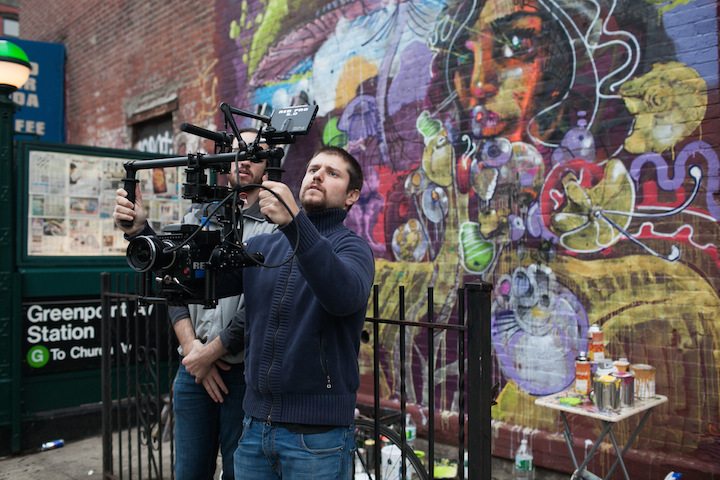
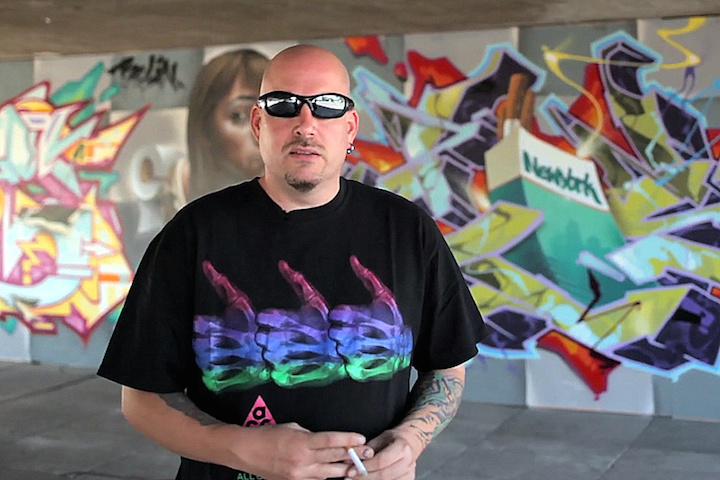
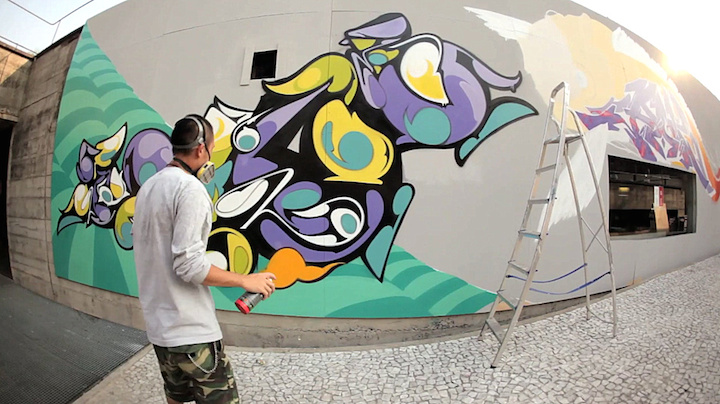
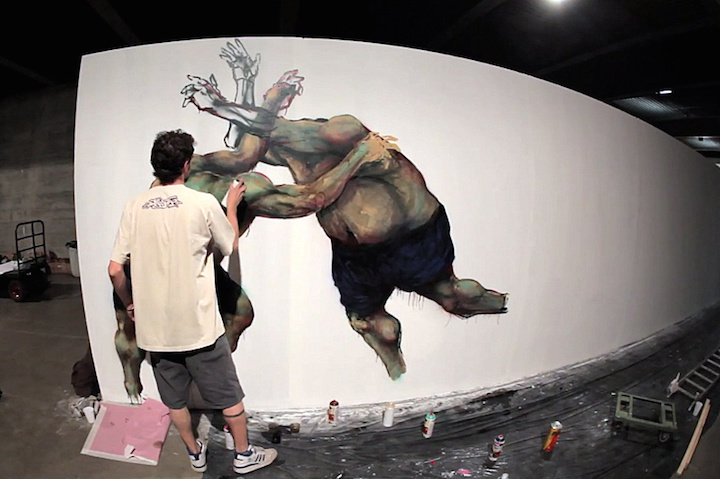
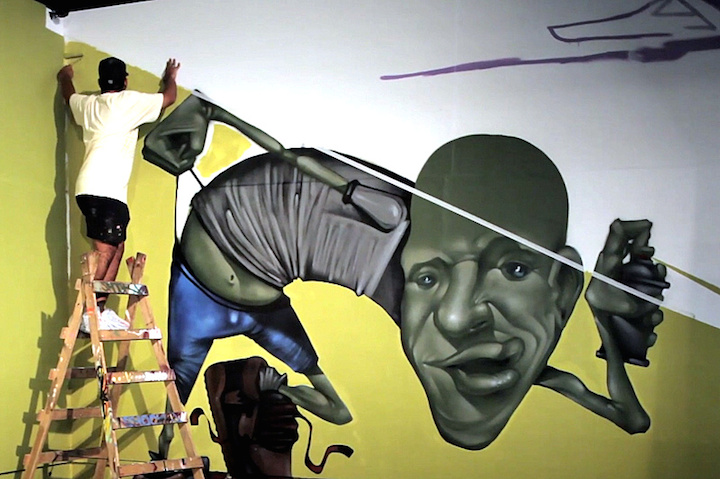
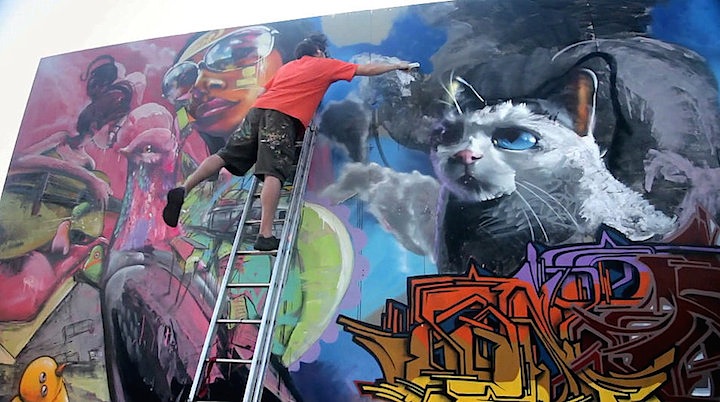
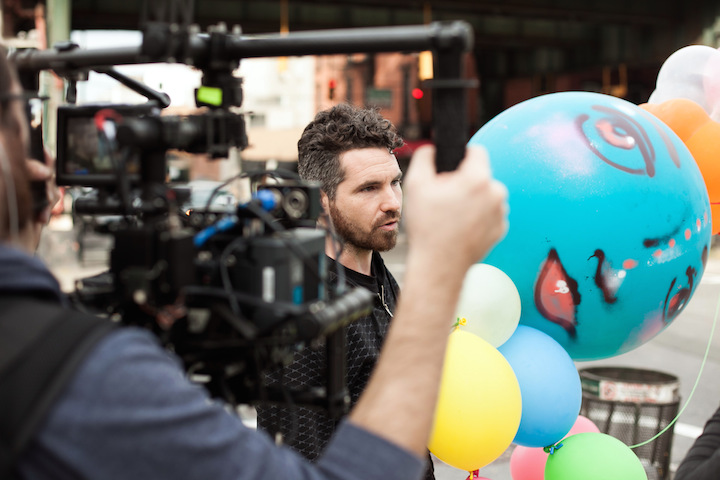
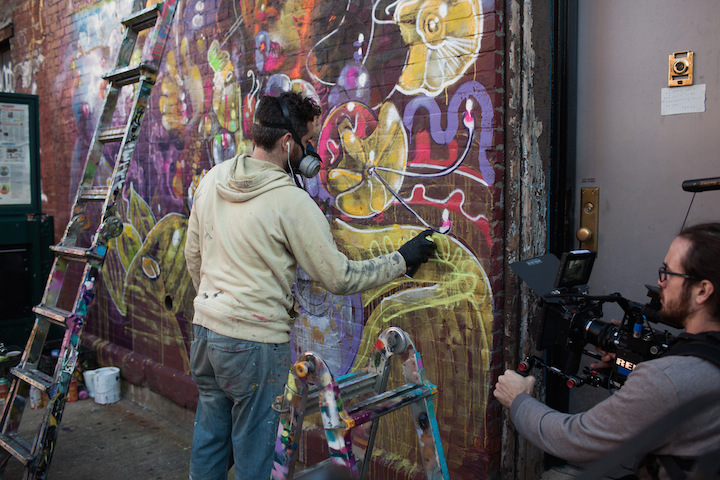

{ 1 comment… read it below or add one }
Thanks Jared for the compliment I always knew you would be a good film maker and I was correct I will send you knew work on what’s happening in SP
Big Hug
Melton